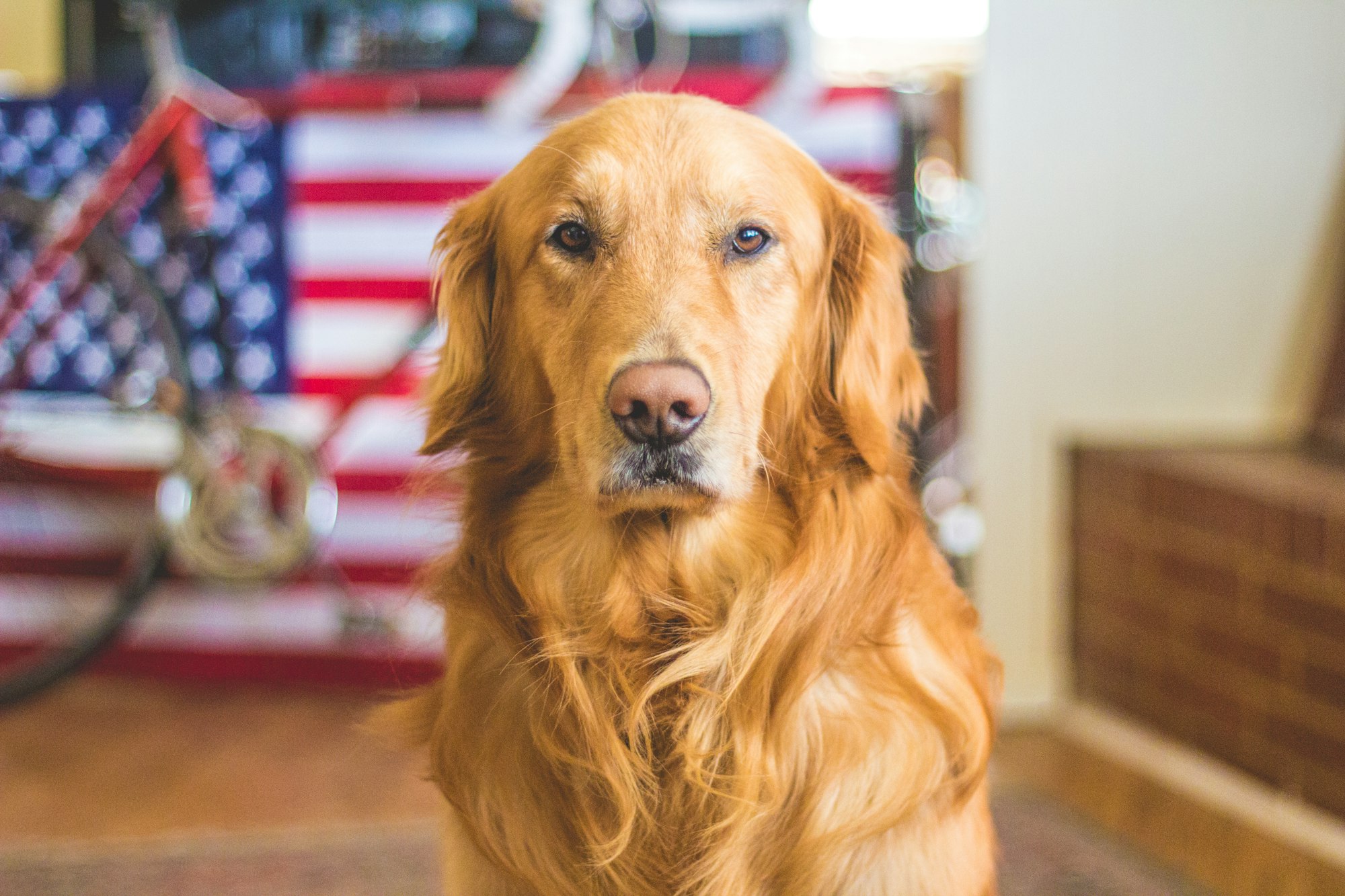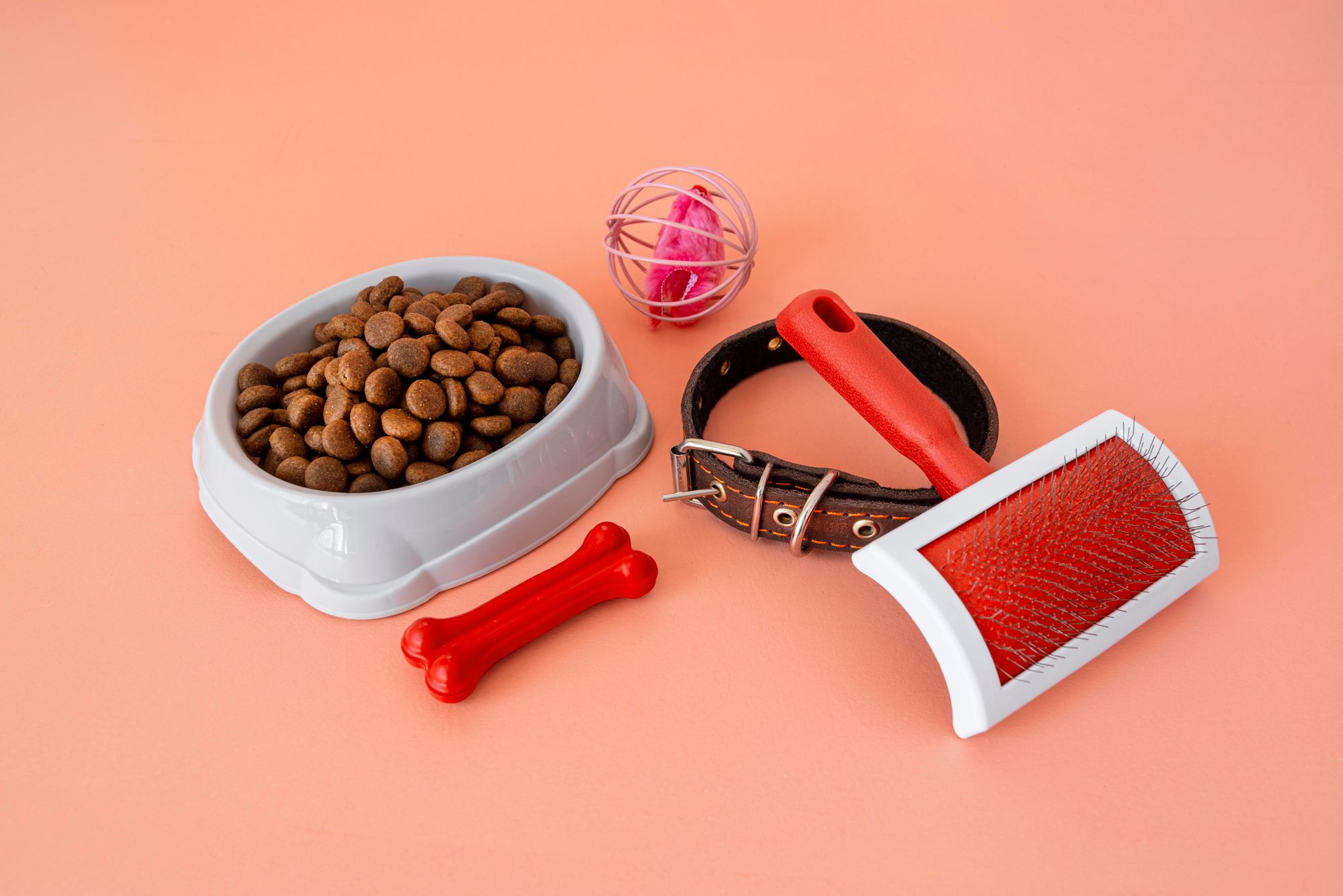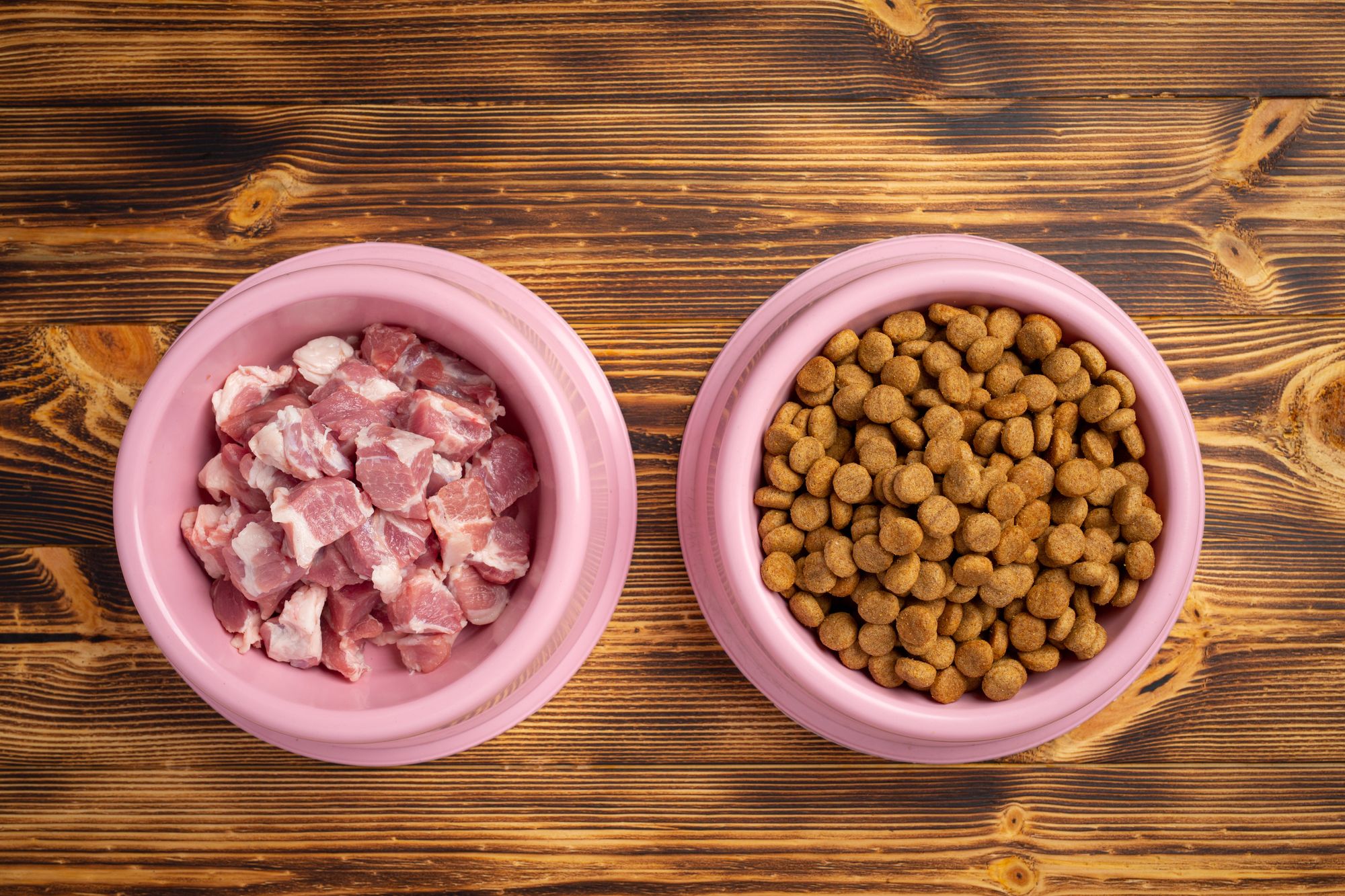When it comes to owning a dog, proper nutrition is essential for their overall health and well-being. One important aspect of providing a healthy diet for your furry friend is keeping their food fresh and properly stored. This is where dog food containers come into play.
Dog food containers are specialized storage containers designed to keep dog food fresh, prevent spoilage, and maintain the nutritional value of the food. They come in a variety of shapes, sizes, and materials, and can be made of plastic, metal, or even ceramic.

One of the primary benefits of using a dog food container is that it helps to prevent spoilage and preserve the quality of the food. When dog food is exposed to air, it can become stale and lose its nutritional value. Additionally, moisture can cause mold and bacterial growth, which can be harmful to your dog's health. By keeping your dog's food in a properly sealed container, you can help to prevent these issues.
Another benefit of using a dog food container is that it can help to keep pests, such as ants and rodents, out of your dog's food. Open bags of dog food can be a tempting target for pests, which can add to contamination and the spread of disease. Airtight containers can help to keep pests out, ensuring that your dog's food remains safe and healthy.
Dog food containers are also convenient and easy to use. Many containers come with built-in handles or wheels, making them easy to move and transport. Additionally, many containers are designed to be easy to clean, which is important for maintaining proper hygiene and preventing the growth of bacteria.
When choosing a dog food container, there are several factors to consider. Here are some things to keep in mind:
- Size: Choose a container that is appropriate for the size of your dog and the amount of food they consume. A large dog will require a larger container than a small dog.
- Material: Consider the material of the container. Plastic containers are lightweight and durable, but can sometimes retain odors. Metal containers are durable and easy to clean, but can be heavy. Ceramic containers are aesthetically pleasing, but can break easily.
- Airtight Seal: Look for a container that has an airtight seal, as this will help to prevent spoilage and keep pests out.
- Ease of Cleaning: Choose a container that is easy to clean and sanitize, as this will help to maintain proper hygiene.
- Durability: Look for a container that is durable and built to last, as this will ensure that it can withstand daily use and wear.
Dog food containers are an essential tool for any dog owner who wants to provide their furry friend with a healthy and nutritious diet. By keeping your dog's food fresh and properly stored, you can help to prevent spoilage, maintain nutritional value, and ensure that your dog stays healthy and happy. When choosing a container, consider factors like size, material, airtight seal, ease of cleaning, and durability. With the right container, you can provide your dog with the best possible nutrition and care.
How many types of food containers are present?
There are several types of food containers available in the market, including:
- Plastic containers:
These are lightweight, durable, and come in various sizes and shapes. They are typically the most affordable option and are easy to clean. However, they may retain odors and can be susceptible to scratching and cracking over time.
- Metal containers:
These are typically made of stainless steel and are durable, long-lasting, and easy to clean. They are less likely to retain odors than plastic containers and are less susceptible to damage. However, they can be heavier than plastic containers and may be more expensive.

- Glass containers:
These are a popular option for people who prefer a more natural material. Glass containers are non-porous and won't retain flavors or odors. They are also recyclable and can be used for both food storage and cooking. However, glass containers can be heavy, fragile, and may break easily.
- Ceramic containers:
These are a popular option for people who want a more aesthetically pleasing option. Ceramic containers come in a range of colors and designs and can be used for both storage and serving. They are also durable and easy to clean. However, ceramic containers can be heavy, breakable, and may be more expensive than other options.
- Vacuum-sealed containers:
These are airtight containers that use a vacuum pump to remove air from the container. This can help to extend the shelf life of food by preventing the growth of bacteria and mold. Vacuum-sealed containers are typically made of plastic or glass and can be used for a range of foods, including dog food.
- Bag clips:
These are small clips that are used to seal bags of dog food to keep them fresh. They are typically made of plastic or metal and are affordable and easy to use. However, they may not provide as strong of an airtight seal as other container options and may not be as durable over time.
Why do you need a container for dog food?
Using a container for dog food is important for several reasons. Here are some of the main reasons why a dog food container is essential:
- Keeps food fresh:
Dog food containers are designed to provide an airtight seal that keeps food fresh for longer. This helps to prevent spoilage and ensures that your dog is eating fresh, nutritious food.
- Prevents pests:
Storing dog food in an open bag can attract pests like ants, mice, and other insects that can contaminate the food. A dog food container provides a barrier that pests cannot penetrate, which helps to keep the food safe and free from contamination.
- Saves space:
Bags of dog food can take up a lot of space in your home, and they can be difficult to stack and store. A container, on the other hand, is designed to be space-saving and can be easily stacked and stored in a closet, pantry, or other small space.
- Provides convenience:
Having a container for your dog's food makes it easy to measure out portions and feed your pet. You can also label the container with the type of food and feeding instructions, which can be helpful if you have multiple dogs or if you need to leave feeding instructions for a pet sitter.
- Improves hygiene:
Using a container for dog food can help to improve hygiene in your home by reducing the risk of spills and messes. It also makes it easier to clean up any spills or messes that do occur.

How should I store dry dog food?
Storing dry dog food properly is important to ensure that the food remains fresh, retains its nutritional value, and is free from contamination. Here are some tips for storing dry dog food:
- Use a dog food container:
As mentioned earlier, a dog food container is the best way to store dry dog food. It should be made of a material that is airtight and easy to clean, such as plastic or metal. The container should be kept in a cool, dry place, away from direct sunlight and heat sources.
- Keep the original packaging:
If you choose not to use a dog food container, keep the dry dog food in its original packaging. The bag should be kept in a cool, dry place and sealed tightly after each use. However, be aware that the packaging may not be as airtight as a container, and it may not provide as much protection against pests.
- Don't mix old and new food:
When storing dry dog food, don't mix old and new food together. Instead, finish the old bag of food before opening a new bag. This helps to prevent the risk of contamination and ensures that your pet is eating fresh food.
- Measure out portions:
When feeding your dog, measure out the appropriate portion size using a measuring cup or scale. This helps to ensure that your dog is getting the correct amount of food and can help to prevent overfeeding.
- Check for signs of spoilage:
Dry dog food should have a shelf life of several months to a year, depending on the brand and the type of food. However, it's important to check for signs of spoilage, such as mold, rancid smells, or a change in texture or color. If you notice any of these signs, discard the food and replace it with a fresh bag.
Storing dry dog food properly involves using a dog food container, keeping the original packaging, not mixing old and new food, measuring out portions, and checking for signs of spoilage. By following these tips, you can help to ensure that your dog is eating fresh, nutritious food that is free from contamination.
How often should you clean dog food containers?
Just like we pay attention to the cleanliness of our food containers, ensuring our dogs' food containers are clean is essential for their health. The frequency of cleaning largely depends on the type of food you're storing. If you're adding elements like a cracked raw egg over dog food, it becomes even more critical to clean the container regularly due to the perishable nature of raw eggs.
If you're feeding your pet a specific diet, like the best food for Chihuahua breeds, or any specialized formula for that matter, you'd want to ensure that every serving is fresh and free from contaminants. Such specialty foods can sometimes have specific storage instructions to maintain their nutritional profile.
As a general guideline:
- Dry Kibble: For kibble or dry food storage, it's a good practice to clean the container every time you refill it. Emptying out any crumbs or old kibble ensures that no old food gets mixed with new, reducing the chance of mold or spoilage.
- Wet or Raw Food: If you store wet food or raw food (like those meals with a cracked raw egg over dog food), containers should be cleaned after every use. Raw ingredients can leave residues that harbor bacteria, which can grow if left unattended.
- Remember the Lids: Lids can collect residues too. Wipe them down each time you clean the container itself.
- Storage Location: Ensure that the container is stored in a cool, dry place, away from direct sunlight. Especially if you're providing specialized meals, like the best food for Chihuahua breeds, maintaining optimal storage conditions can help retain the food's quality.
Regular cleaning not only extends the life of the food container but also ensures that your pet gets their meals in the freshest and healthiest manner possible. It's a small task, but one that holds importance in the larger picture of pet health and hygiene.
Here are some tips on how often to clean your dog food container and how to do it properly:
Frequency of Cleaning
The frequency with which you should clean your dog food container depends on how often you use it and how quickly you go through the food. As a general rule, you should aim to clean the container at least once a month. If you use the container frequently or live in a humid environment, you may need to clean it more often.
If you notice any signs of mold or mildew, or if you find insects or other pests in the container, you should clean it immediately. Additionally, if you change the type of food you're feeding your dog, it's a good idea to clean the container thoroughly before refilling it.

Steps for Cleaning
Here are the steps you should follow when cleaning your dog food container:
- Empty the container: Begin by emptying the container of all remaining food. Use a scoop or measuring cup to remove as much of the food as possible.
- Wash with soap and hot water: Next, wash the container with hot, soapy water. Use a non-toxic, pet-safe soap to avoid any potential harm to your pet. Scrub the container thoroughly to remove any remaining food residue or dirt. You can use a soft-bristled brush or sponge to scrub the inside of the container.
- Rinse with hot water: After washing the container, rinse it thoroughly with hot water. Make sure all soap residue is removed.
- Dry the container: Once the container is rinsed, dry it completely using a clean, dry towel or cloth. Make sure the container is completely dry before refilling it with food.
Additional Tips
Here are some additional tips to keep in mind when cleaning your dog food container:
Use separate containers:
If you have more than one dog or feed your pet different types of food, use separate containers for each type of food to prevent contamination.
Store in a cool, dry place:
After cleaning the container, store it in a cool, dry place to prevent the growth of mold or bacteria.
Use airtight containers:
Use airtight containers to keep food fresh and prevent pests from getting inside.
Don't store food for too long:
Avoid storing dog food for too long, as it can go bad and become less nutritious. Only buy the amount of food that your dog will eat within a reasonable timeframe.
Avoid using harsh chemicals:
Avoid using harsh chemicals, such as bleach, to clean your dog food container. These chemicals can be toxic to your pet and may leave residue that can contaminate the food.
Conclusion
Maintaining a clean dog food container is an important part of ensuring your pet's health and well-being. By following the recommended cleaning frequency and steps, you can help to prevent the growth of harmful bacteria and mold, as well as keep pests away from your pet's food.
Using separate containers for different types of food and storing the container in a cool, dry place can also help to maintain the freshness and nutritional value of your pet's food. It's also important to avoid using harsh chemicals and to make sure that the container is completely dry before refilling it with food.
By taking these steps, you can help to ensure that your pet is eating healthy, nutritious food that is free from contamination and harmful bacteria. In addition to cleaning the container regularly, it's also important to pay attention to the expiration date of the food and to avoid storing it for too long to prevent it from going bad and becoming less nutritious.
Overall, maintaining a clean dog food container is a simple but important step in caring for your pet and helping to ensure that they stay healthy and happy for years to come.
Get more expert advice on pet-parenting by visiting the Off Leash blog at TryFi.com.
TryFi's The Fi Dog Collar is a must-have for any pet parent, it's a GPS tracking collar that helps you keep tabs on your dog's location, activity, and sleep patterns, and alerts you if they escape your backyard. Try the Fi Dog Collar today!





